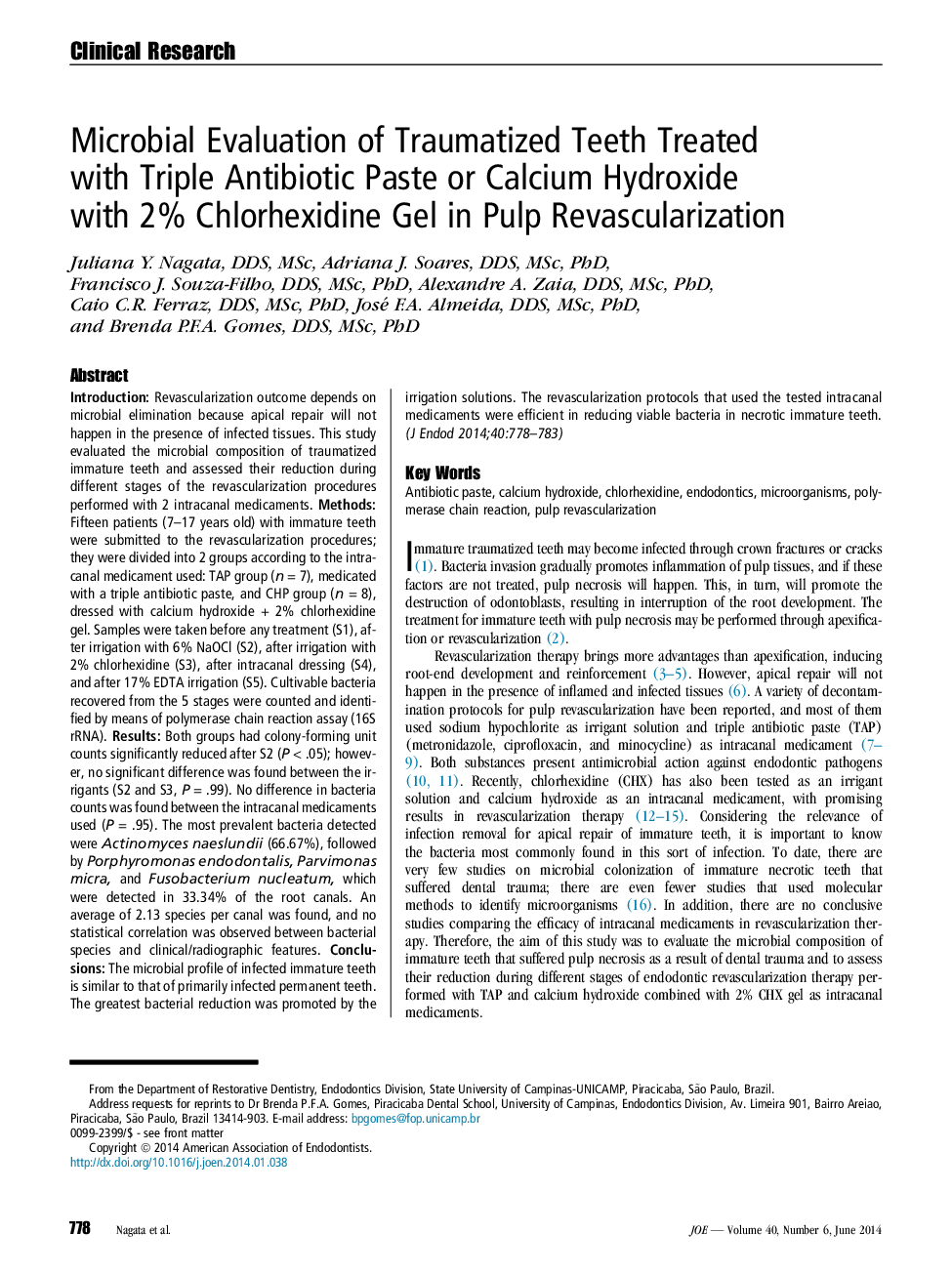| کد مقاله | کد نشریه | سال انتشار | مقاله انگلیسی | نسخه تمام متن |
|---|---|---|---|---|
| 3146859 | 1197326 | 2014 | 6 صفحه PDF | دانلود رایگان |
IntroductionRevascularization outcome depends on microbial elimination because apical repair will not happen in the presence of infected tissues. This study evaluated the microbial composition of traumatized immature teeth and assessed their reduction during different stages of the revascularization procedures performed with 2 intracanal medicaments.MethodsFifteen patients (7–17 years old) with immature teeth were submitted to the revascularization procedures; they were divided into 2 groups according to the intracanal medicament used: TAP group (n = 7), medicated with a triple antibiotic paste, and CHP group (n = 8), dressed with calcium hydroxide + 2% chlorhexidine gel. Samples were taken before any treatment (S1), after irrigation with 6% NaOCl (S2), after irrigation with 2% chlorhexidine (S3), after intracanal dressing (S4), and after 17% EDTA irrigation (S5). Cultivable bacteria recovered from the 5 stages were counted and identified by means of polymerase chain reaction assay (16S rRNA).ResultsBoth groups had colony-forming unit counts significantly reduced after S2 (P < .05); however, no significant difference was found between the irrigants (S2 and S3, P = .99). No difference in bacteria counts was found between the intracanal medicaments used (P = .95). The most prevalent bacteria detected were Actinomyces naeslundii (66.67%), followed by Porphyromonas endodontalis, Parvimonas micra, and Fusobacterium nucleatum, which were detected in 33.34% of the root canals. An average of 2.13 species per canal was found, and no statistical correlation was observed between bacterial species and clinical/radiographic features.ConclusionsThe microbial profile of infected immature teeth is similar to that of primarily infected permanent teeth. The greatest bacterial reduction was promoted by the irrigation solutions. The revascularization protocols that used the tested intracanal medicaments were efficient in reducing viable bacteria in necrotic immature teeth.
Journal: Journal of Endodontics - Volume 40, Issue 6, June 2014, Pages 778–783
